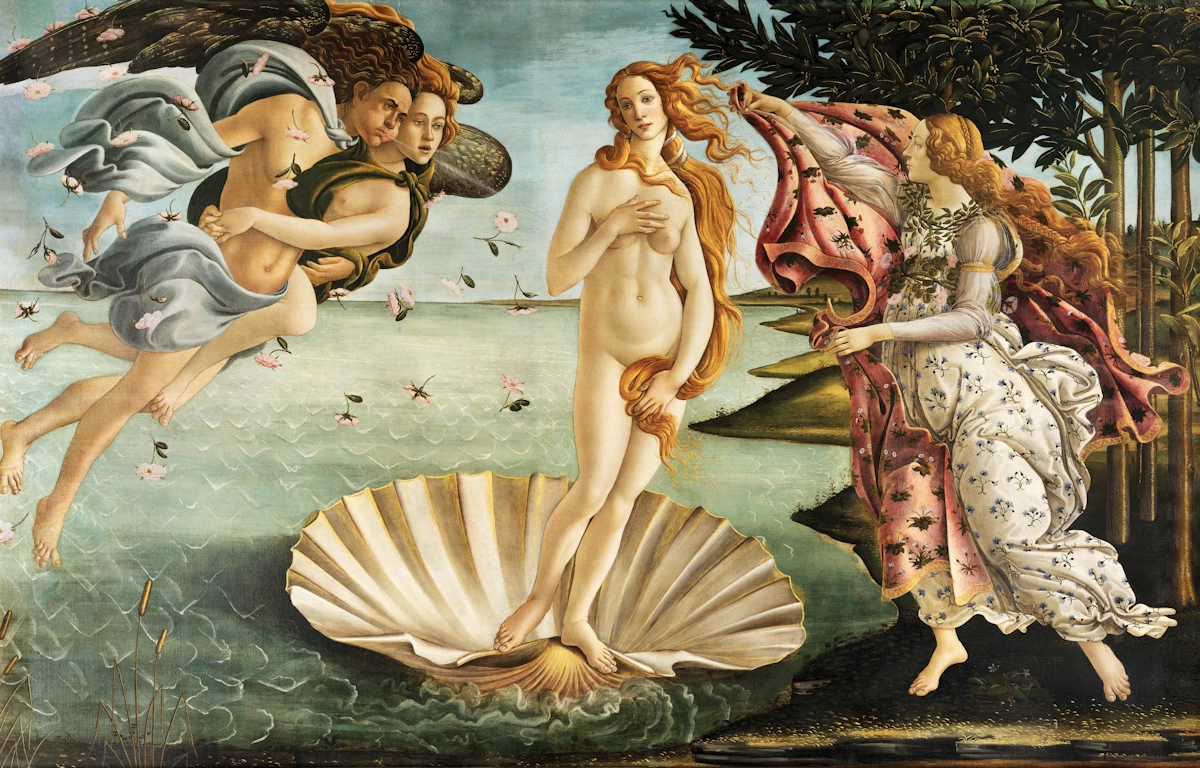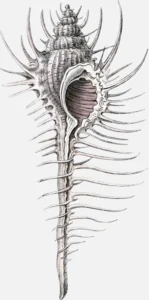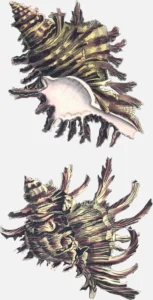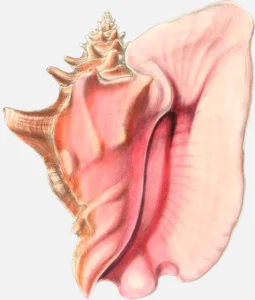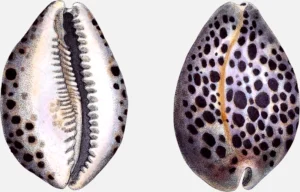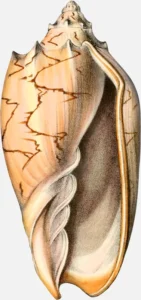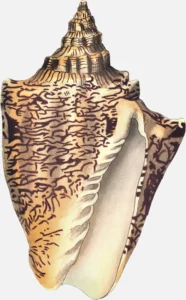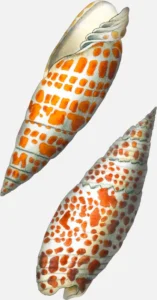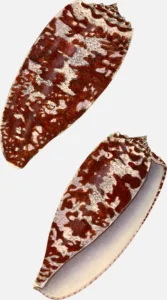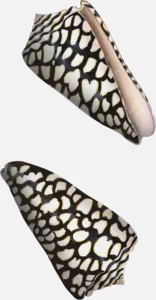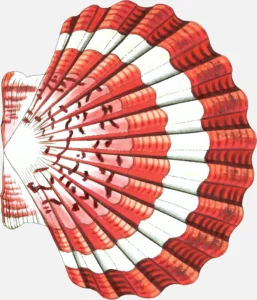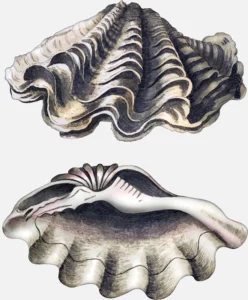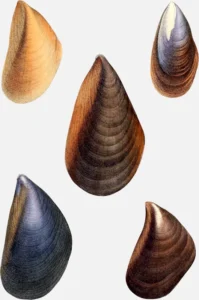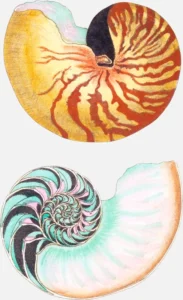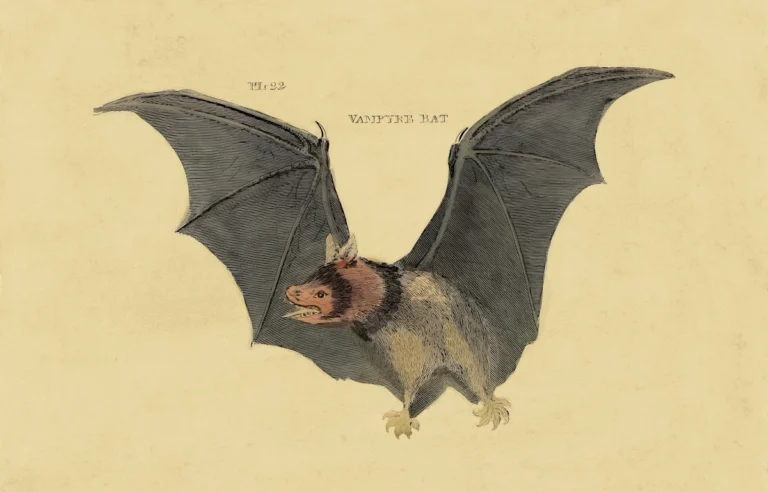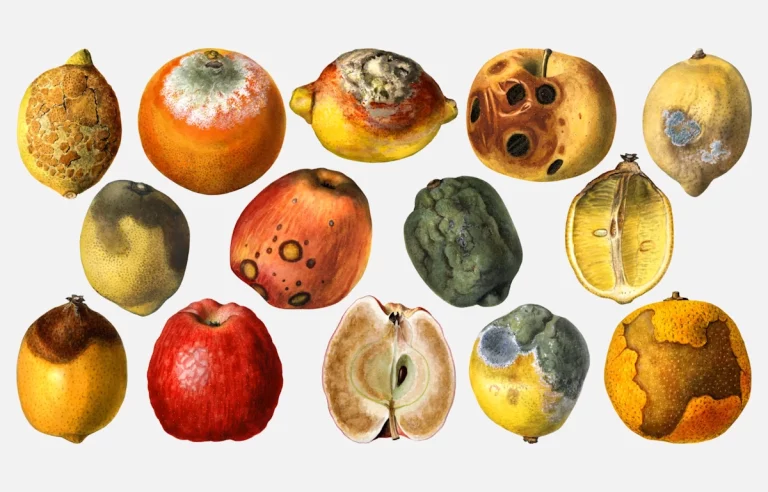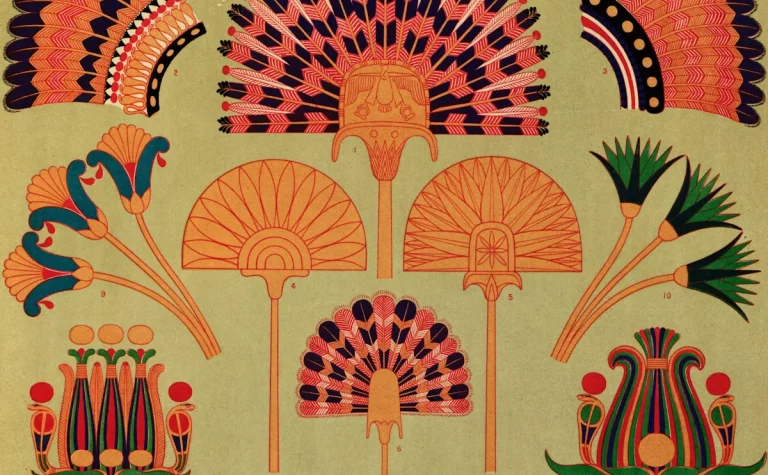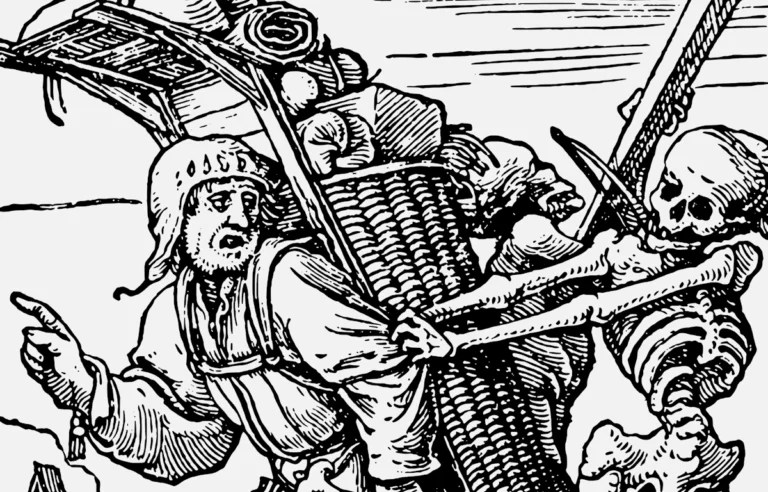The Beauty of Conchology: Exploring 10 Fascinating Shells
Conchology, the study of shells, opens a gateway to some of the ocean’s most captivating creatures. Shells are not only beautiful but also serve as armor, homes, and sometimes even weapons for the mollusks that create them. Here are 10 remarkable shells, each with its own intriguing backstory and a few fun facts that make them unique.
1. Murex: The Spiky Warrior
The Murex shell is one of the most dramatic and armored shells you’ll find in the ocean, with its spikes and ridges making it look like a medieval weapon. These spikes aren’t just for show—they actually help protect the mollusk from predators like crabs and fish that might try to crack open its shell. Murex shells come in various shapes and colors, depending on the species, and are typically found in warm, tropical waters.
One of the coolest things about the Murex is its historical significance. Ancient civilizations, like the Phoenicians, prized the Murex for the rare purple dye they could extract from its snail. Known as Tyrian purple, this dye was so valuable that it was worth its weight in gold! Because only the wealthiest of people could afford it, purple eventually became known as the color of royalty. Fun fact: it took around 12,000 Murex snails to produce just 1.4 grams of this dye!
2. Conch: The Musical Marvel
The Conch shell is not just a pretty piece of beach décor—it’s also been used for centuries as a musical instrument. Cultures from Polynesia to the Caribbean have used conch shells as horns to communicate over long distances or mark important events. The deep, resonant sound of a blown Conch shell can be heard for miles, and it has a special place in many cultural traditions.
The Queen Conch is one of the most famous conch species, with a beautifully spiraled shell and a soft, pink interior. These shells can grow quite large, sometimes reaching up to a foot long! What’s even more fascinating is that Conchs are a keystone species in their ecosystems, meaning they play a crucial role in maintaining the health of their environments. As they feed on algae, they prevent overgrowth, helping keep coral reefs healthy. Conchs are also an important food source in many tropical regions, where their meat is used in dishes like conch fritters and ceviche.
3. Cowrie: The Shiny Treasure
The Cowrie shell has been admired for centuries for its smooth, shiny surface and elegant shape. In ancient times, cowrie shells were even used as currency in parts of Africa and Asia. Their glossy finish comes from the way the cowrie snail continuously buffs and polishes the outside of its shell using a part of its body called the mantle. Cowrie shells come in many sizes and colors, making them highly collectible.
One of the most striking types is the Tiger Cowrie, which features dark spots on a creamy background, resembling the pattern of a tiger’s fur. The Tiger Cowrie can grow up to six inches long and is commonly found in the warm waters of the Indian and Pacific Oceans. What’s interesting about the Tiger Cowrie is that its smooth shell helps it stay hidden from predators, while its beautiful pattern acts as camouflage among the rocks and coral. These shells were often used as good luck charms and symbols of protection in many ancient cultures.
4. Volute: The Regal Curves
Volute shells are known for their graceful spirals and intricate markings. These shells belong to a family of predatory sea snails and are found in warm, tropical seas, often buried in sand or mud. The Volute’s beautifully patterned shell serves as a testament to the artistry of nature.
Two notable members of the Volute family are the Bat Volute and the Hebrew Volute. The Bat Volute, named for the bat-like wings on its shell, is found in the Indo-Pacific region. Its unique pattern and markings make it a favorite among collectors. The Hebrew Volute, on the other hand, has a design that looks like Hebrew script. These shells are not only visually stunning but also play an important role in their ecosystems by preying on other marine creatures, such as small clams and snails. The spiraled design of the Volute shell has inspired everything from jewelry to architecture over the centuries, proving that nature truly is the greatest artist.
5. Miter: The Majestic Headpiece
Named after the tall, pointed hats worn by bishops, Miter shells are a symbol of elegance and grace. There are several species in this family, but the two best-known varieties are the Papal Mitre and the Episcopal Miter. The Papal Miter (Mitra papalis) has a pale background with reddish-brown markings that resemble the folds of a bishop’s hat. Found in the Indo-Pacific, it buries itself in the sand to hide from predators while waiting for small invertebrates to pass by for a quick meal.
The Episcopal Miter (Mitra mitra) is equally striking, with bright orange and red patterns. These shells are commonly found in shallow waters around coral reefs and are prized by collectors for their bold coloration and intricate designs. Both Miter species play an essential role in the marine ecosystem by keeping populations of small mollusks in check. Their beautiful, pointed shells have been used as inspiration in religious art and even architecture, adding a touch of elegance wherever they appear.
6. Conus: The Deadly Beauty
The Conus shell may look like a piece of natural art, but don’t be fooled—this beauty is one of the most dangerous creatures in the ocean. The Marbled Cone (Conus marmoreus) is particularly famous for its stunning black-and-white marbled patterns, but it also packs a venomous punch. These snails have a specialized harpoon-like tooth that they use to shoot venom into their prey, which can paralyze or kill small fish and other mollusks.
Another notorious member of the Conus family is the Geography Cone (Conus geographus), named for the map-like patterns on its shell. The Geography Cone’s venom is strong enough to kill a human, and there have been cases of fatalities caused by its sting. However, this venom is also being studied for its potential medical benefits. Scientists have discovered that certain compounds in cone snail venom could be used to develop new painkillers or treatments for neurological disorders. So, while these shells are dangerous, they might also hold the key to some groundbreaking medical discoveries.
7. Scallop: The Dancer of the Sea
The Scallop shell is famous not just for its beautiful fan-like design but for the creature’s surprising mobility. Unlike most bivalves that stay in one spot, Scallops can actually swim by rapidly clapping their shells together, propelling themselves through the water. This quick escape tactic helps them avoid predators like starfish and crabs.
One of the most famous Scallops is the Mediterranean Scallop (Pecten jacobaeus), which has been used as a symbol of pilgrimage in religious art. These shells, with their ribbed surfaces and fan-like shapes, come in a variety of colors, including shades of red, orange, and yellow. Interestingly, Scallops also have dozens of tiny eyes along the edge of their mantles, allowing them to detect light and movement. These eyes help them spot predators and react quickly, making the Scallop a master of both beauty and survival.
8. Clam: The Giant of the Bivalves
The Giant Clam (Tridacna gigas) holds the title for being the largest living bivalve, capable of reaching four feet in length and weighing more than 500 pounds. These gentle giants are found in the coral reefs of the Indian and Pacific Oceans, where they play a crucial role in maintaining the health of the reef ecosystem. Giant Clams have a symbiotic relationship with algae, which live in their tissues and provide them with food through photosynthesis. This relationship also gives Giant Clams their beautiful, vibrant colors, ranging from electric blues to bright greens.
Despite their massive size, Giant Clams are harmless to humans and spend their days filtering water to feed on plankton. In fact, a single Giant Clam can filter thousands of liters of water each day, helping to keep the surrounding water clean. These clams can live for over 100 years, making them some of the ocean’s most long-lived creatures.
9. Mussel: The Master Filterer
Mussels are small but mighty when it comes to filtering water. They attach themselves to rocks, piers, or other hard surfaces with super-strong threads and can form large beds that provide habitat for other marine creatures. One of the most well-known species is the Blue Mussel (Mytilus edulis), found in the Atlantic and Pacific Oceans. These mussels are not only important to the marine ecosystem but are also farmed for food, with millions of tons harvested every year.
Blue Mussels can filter as much as 25 liters of water per day, removing plankton and other particles. This filtering helps improve water quality and clarity in coastal areas. Interestingly, mussel beds also act as natural wave breakers, reducing coastal erosion. The shells themselves have been used throughout history to create buttons, jewelry, and even tools.
10. Nautilus: The Ancient Mariner
The Nautilus is a living fossil, with its ancestors dating back over 500 million years. Its perfectly spiraled shell helps it control its buoyancy, allowing it to float up and down in the water by adjusting the amount of gas in its chambers. Found in the deep waters of the Indo-Pacific, the Nautilus moves by jet propulsion, expelling water from its shell to propel itself forward.
The Nautilus shell is made up of numerous chambers, and as the animal grows, it creates new chambers while sealing off the old ones. The inner part of the shell is lined with a beautiful, pearly substance, which has been used for centuries in jewelry and decorative arts. The Nautilus has inspired countless artists and designers, and its spiral shape is often seen as a symbol of nature’s perfection and the mysteries of the deep sea.
From the spiked Murex to the ancient Nautilus, each of these shells reveals a unique aspect of the ocean’s wonders. Whether they serve as homes, weapons, or even works of art, these marine marvels show us just how extraordinary the natural world can be. So next time you’re at the beach, keep your eyes open—you never know what amazing shell might be waiting to tell its story.


